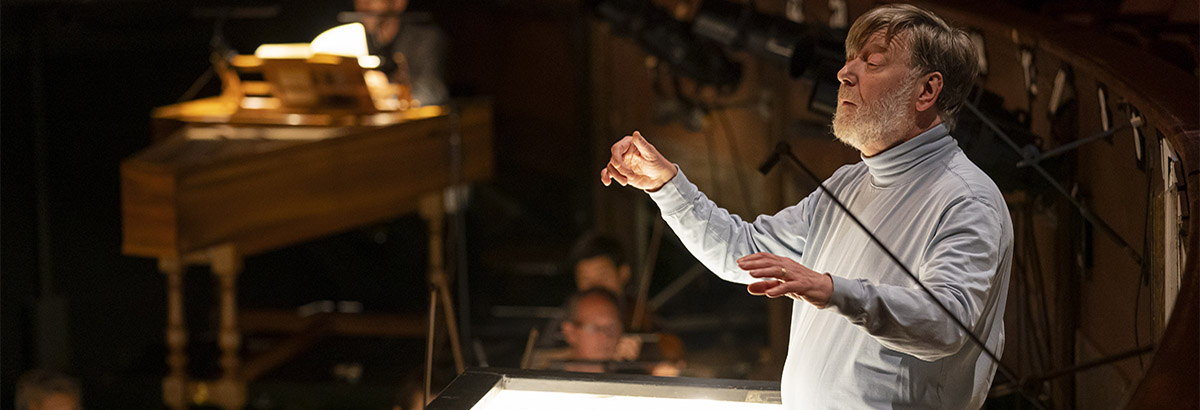May 05, 2020
Opera 101 Overtures: Let’s start at the very beginning…
Rossini's overture to The Barber of Seville is instantly recognizable to almost anyone who has watched a movie or TV show at some point in their life. But what exactly is an overture? Here's a very brief introduction to this musical form.
What is an overture?
Yuri Temirkanov leads the St. Petersburg Philharmonic Orchestra in the overture to Rossini's The Barber of Seville.
The overture is simply an instrumental piece that plays before the start of the opera or one of its acts. In opera's early days, many overtures were considered incidental music that played before the audience was even seated. This was still the case during Mozart's era. Some of his most famous overtures, for The Marriage of Figaro (1786) and Don Giovanni (1787), might not have even been heard by the audience, who instead were most likely milling around chatting and eating before the official start of the opera.
Herbert von Karajan leads the Vienna Philharmonic in the overture to Mozart's Don Giovanni.
Beethoven & Rossini
However, this practice eventually changed. Starting in the early 1800s, as Beethoven and Rossini were rising to prominence, the overture became an essential part of the opera and something to be appreciated by an attentive audience. Beethoven wrote only one opera, Fidelio (first premiered in 1805), but he actually composed four different versions of the overture until he finally had one that he deemed suitable.
Leonard Bernstein leads the Bavarian Broadcast Symphony Orchestra in Beethoven's Leonore Overture No. 3.
Unlike Beethoven, Rossini wrote with astonishing speed, sometimes writing complete operas within a matter of weeks and frequently borrowing from himself to write his crowd-pleasing overtures. In fact, the famous tunes in The Barber of Seville's overture aren't heard in the rest of the opera. Rossini simply borrowed some melodies from two previous compositions: Aureliano in Palmira and Elizabeth, Queen of England.
Wagner & Verdi
Later in the 19th century, opera masters Wagner and Verdi truly elevated the overture to something magnificent, writing atmospheric introductions that also explicitly included the melodies that you were about to hear. Prime examples of this are Wagner's The Flying Dutchman and Verdi's La forza del destino, both of which basically have the same function as today's movie previews.
Yannick Nézet-Séguin leads the Met Orchestra in Wagner's overture to The Flying Dutchman.
Xian Zhang leads the Orchestra Sinfonica di Milano in Verdi's overture to La forza del destin.
Tchaikovsky
As the Romantic era wore on, some composers started using the term overture to indicate any stand-alone orchestral piece. Probably the most famous of these is Tchaikovsky's blockbuster 1812 Overture, written to commemorate Russia's defeat of Napoleon's Grande Armée, which calls for a battery of percussion including cannons.
Sir Mark Elder and the Hallé Orchestra perform Tchaikovsky's 1812 Overture at BBC Proms.
Overtures in musical theater
In the 20th century, overtures continued to be an integral part of musical theater works, with notable examples such as the overtures to Leonard Bernstein's Candide and Rodgers & Hammerstein's Oklahoma! becoming famous in their own right.
Overture to Oklahoma! from the soundtrack to the 1955 film adaptation.
Photo: Todd Rosenberg
Lyric Opera of Chicago does not own copyrights to any of the above videos.
